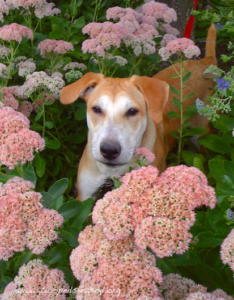


Lately, whenever I take my dog for her walk, she sneezes as soon as we get outside. I find it interesting that my vet says I can give her Claritin—the same dose that I take for my own seasonal allergies. Must be time to repost our allergy medicine post featuring Dr. Lai’s poem.
–Drs. Kardos and Lai
The Quest for the Best (antihistamine)
Junior’s nose is starting to twitch
His nose and his eyes are starting to itch.
As those boogies flow
, you ask oh why, oh why can’t he learn to blow?
It’s nice to finally see the sun
But the influx of pollen is no fun.
Up at night, he’s had no rest,
But which antihistamine is the best?
It’s a riddle with a straight forward answer. The best antihistamine, or “allergy medicine” is the one which works best for your child with the fewest side effects. Overall, I don’t find much of a difference between how well one antihistamine works versus another for my patients. However, I do find a big difference in side effects.
Oral antihistamines differ mostly by how long they last, how well they help the itchiness, and their side effect profile. During an allergic reaction, antihistamines block one of the agents responsible for producing swelling and secretions in your child’s body, called histamine. Prescription antihistamines are not necessarily “stronger.” In fact, at this point there are very few prescription antihistamines. Most of what you see over-the-counter was by prescription only just a few years ago. And unlike some medications, the recommended dosage over-the-counter is the same as what we used to give when we wrote prescriptions for them.
The oldest category, the first generation antihistamines work well at drying up nasal secretions and stopping itchiness but don’t tend to last as long and often make kids very sleepy. Diphendydramine (brand name Benadryl) is the best known medicine in this category. It lasts only about six hours and can make people so tired that it is the main ingredient for many over-the-counter adult sleep aids. Occasionally, kids become “hyper” and are unable to sleep after taking this medicine. Another first generation antihistamine is Clemastine (eg.brand name Tavist).
The newer second generation antihistamines cause less sedation and are conveniently dosed only once a day. Loratadine (eg. brand name Alavert, Claritin) is biochemically more removed from diphenhydramine than Cetirizine (eg. brand Zyrtec) and runs a slightly less risk of sleepiness. However, Cetirizine tends to be a better at stopping itchiness.
Now over-the-counter, fexofenadine (eg brand name Allegra) is a third generation antihistamine. Theoretically, because a third generation antihistamine is chemically the farthest removed from a first generation antihistamine, it causes the least amount of sedation. The jury is still out.
If you find your child’s allergies are breaking through oral antihistamines, discuss adding a different category of oral allergy medication, eye drops or nasal sprays with your pediatrician.
Because of decongestant side effects in children, avoid using an antihistamine and decongestant mix (often, first generation antihistamines such as brompheniramine are combined in this fashion).
Back to our antihistamine poem:
Too many choices, some make kids tired,
Paradoxically, some make them wired.
Maybe while watering flowers with a hose,
I’ll just turn the nozzle and wash his nose.
Naline Lai, MD with Julie Kardos, MD
©2016 Two Peds in a Pod®
Updated from the original post April 10, 2011



